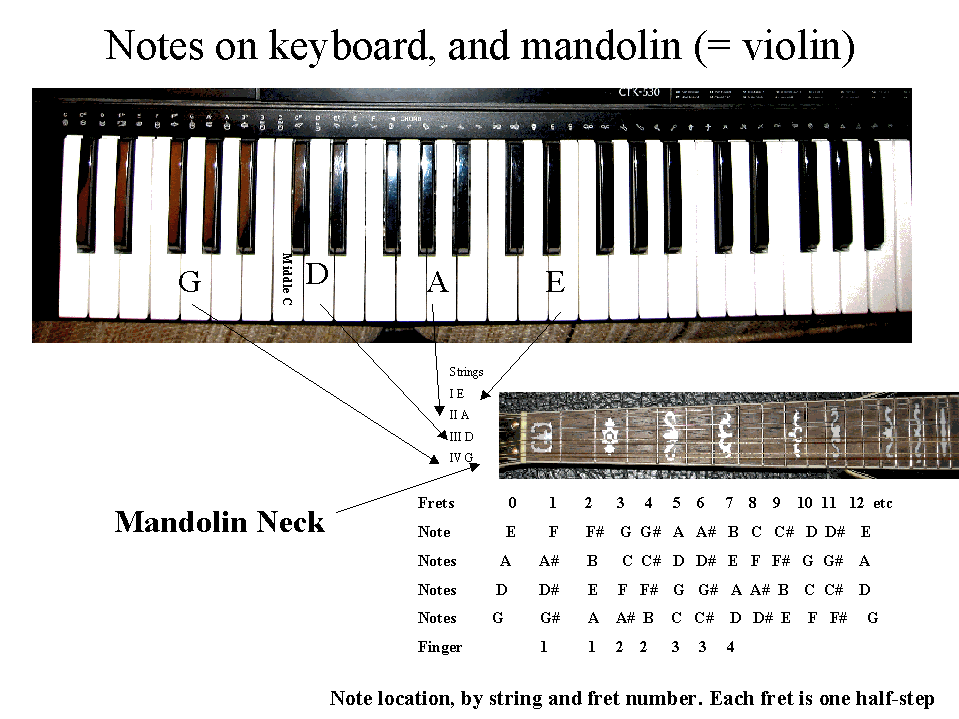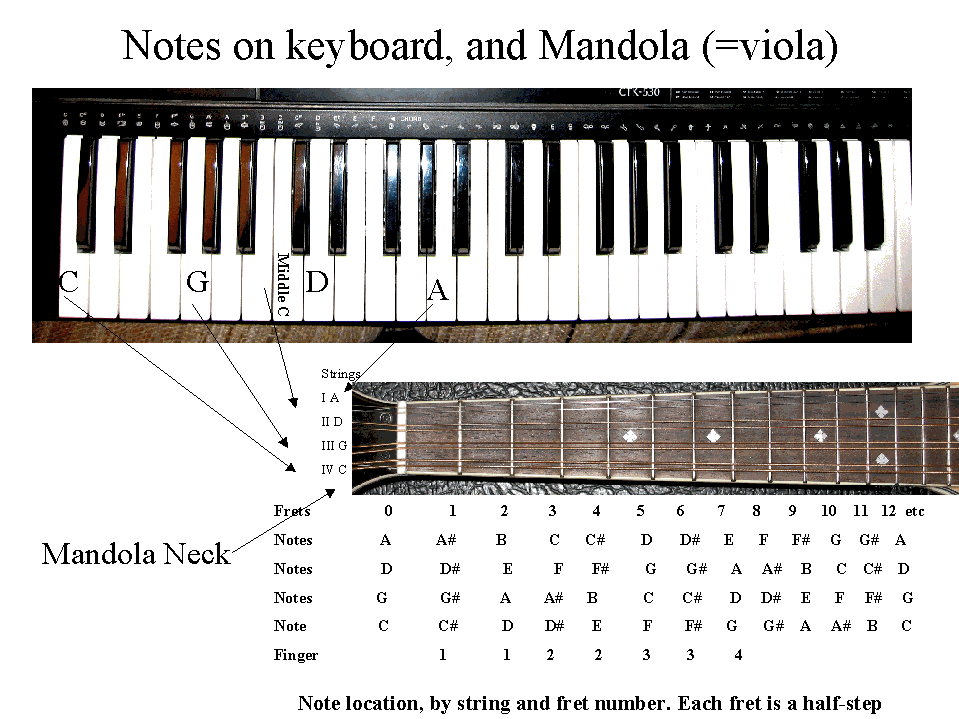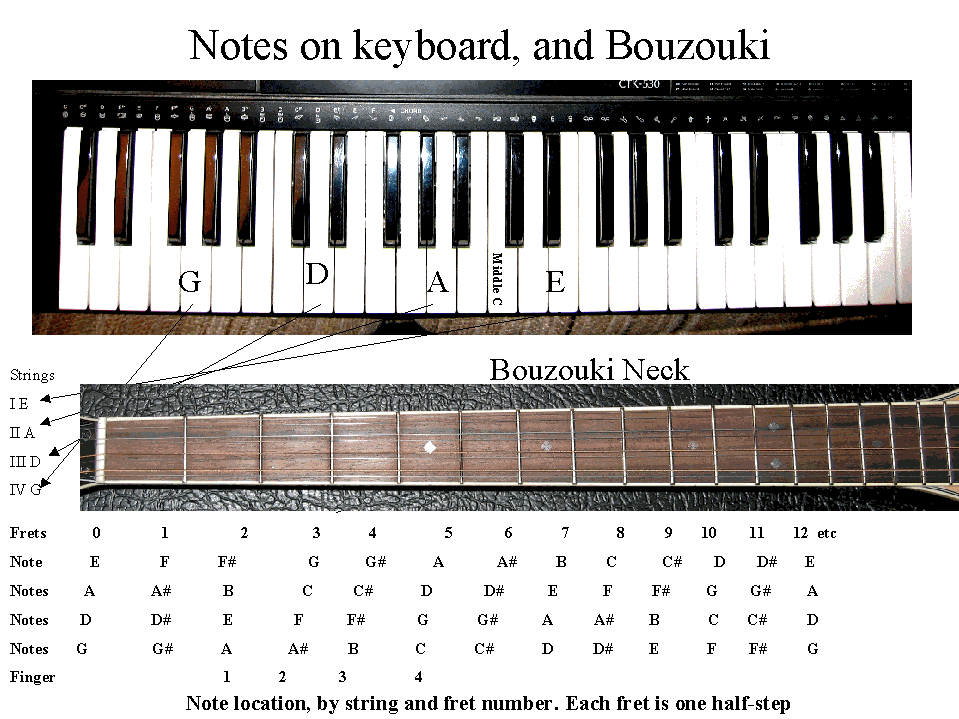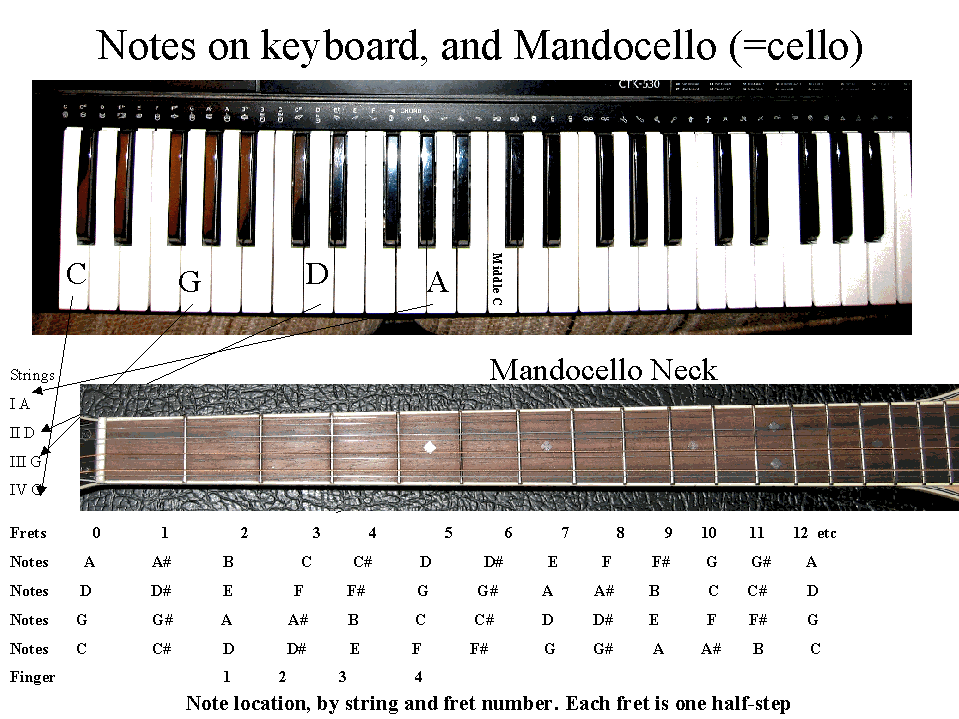FINDING NOTES ON A FRETTED INSTRUMENT
On a fretted instrument, to derive more than one pitch from the same
string, you hold the string against one of the frets to shorten the
string length to a desired new length to get the note you want.
As you work your way up the neck, trying various frets and making the
vibrating section of the string section gradually shorter, the pitch
increases. See our section on accoustics for more information.
At any rate, except for the majority of Appalacian dulcimers, virtually
all fretted string instruments in Western music (including guitar
family, mandolin family) have one fret for every half step (minor
second) interval. This is twelve half steps per octave, which
allows you to play all the standard notes in each octave..... until the
string becomes too short and/or you run out of frets or fretboard as
you move along the neck from low to high pitch .
Also, remember that keyboard instruments have a key for
every half step within their range.
You can relate notes on the keyboard to the notes available along a
fretted string. You need to know the note the string is tuned to,
when it's not being fretted. Then you find that note on the piano
keyboard. Then you move to the right for higher pitches on the
keyboard, one key at a time (including both white and black) and at
same time you move up the nect of the fretted instrument, making higher
pitches with a gradually shorter piece of string, one fret at a
time. There will be an exact match between the notes you find on
the keyboard and the notes you play on the fretted instrument, until
you run out of keys on the keyboard or run out of frets on the string
instrument, whichever comes first.
For an example, examine this first chart that relates keyboard to
mandolin neck.

The finger numbers in this chart represent places for your fingers when
your hand is in 'first position.' Note that there are two places
each for first, second and third finger. This because the frets
are so close together. This fingering numbering can be
misleading.. Really, in any given piece, you almost always use
just one each of those finger positions.
Let's try an example. The mandolin A string, unfretted, plays an
A above middle
C. You find that A on the keyboard, and compare. If the mandolin
is in tune, both notes will sound the same. Then you move right
one key on the keyboard to an A# (alias B-flat) and move right to the
first fret on the mandolin A string. You compare those and
they both sound like the A# (or B-flat). Move right again on the
keyboard to a B natural, and check that against the second fret on the
mandolin A string. They should both sound like the B natural.
this you can do clear up the neck of the mandolin. Then you can
try the other three pairs of strings on the mandolin, and you should
get similar matches.
Now, check out this second chart, comparing keyboard with mandola,

The finger numbers in this chart represent places for your fingers when
your hand is in 'first position.' Note that as with the mandolin,
there are two places each
for first, second and third finger. This because the frets are so
close together. As with the mandolin chart, this finger numbering
can be misleading.. Really, in any
given piece, you almost always use just one each of those finger
positions.
Observe that the neck is somewhat longer (17 instead of 13 inches, or
thereabouts) but the concepts remain the same as far as keyboard and
mandola notes are concerned. Note there is no E string pair
but a C string pair has been added, and unfretted it should sound like
the C below middle .C on the keyboard.
Note on these two diagrams that the normal association between
fingers and frets is similar. Your hand is large enough that you
can usually reach more than one fret with each finger, while leaving
your hand at the same point along the neck. this is not true with
the longer-necked bouzouki or mandocello in the following two diagrams.

Here, the bouzouki is shown tuned an octave lower than the
mandolin. There are other tunings used for the bouzouki, but this
is just for points of illustration.
The interesting thing here is the change in the finger to fret
relationship. With a small to medium sized hand, each finger can
only reach one fret per string while your hand is at a fixed point
along the neck. So on longer necked instruments like this, you
normally do a lot more shifting of your hand position than people do on
short necked instruments.

The mandocello is tuned like a cello, and its neck length is similar to
that of a cello and a bouzouki. The C string pair is two octaves
below middle C. The A string pair is just below middle C.
And here again, the frets are far enough apart due to the long neck
that you normally can reach one fret on each string with each finger
when your hand remains in the same spot along the neck.
Now that you can find notes on the string instrument neck, you need to
determine which fingers to use to play the notes belonging to a
particular key.
Fingering in a Key
Note Location and Finger Patterns